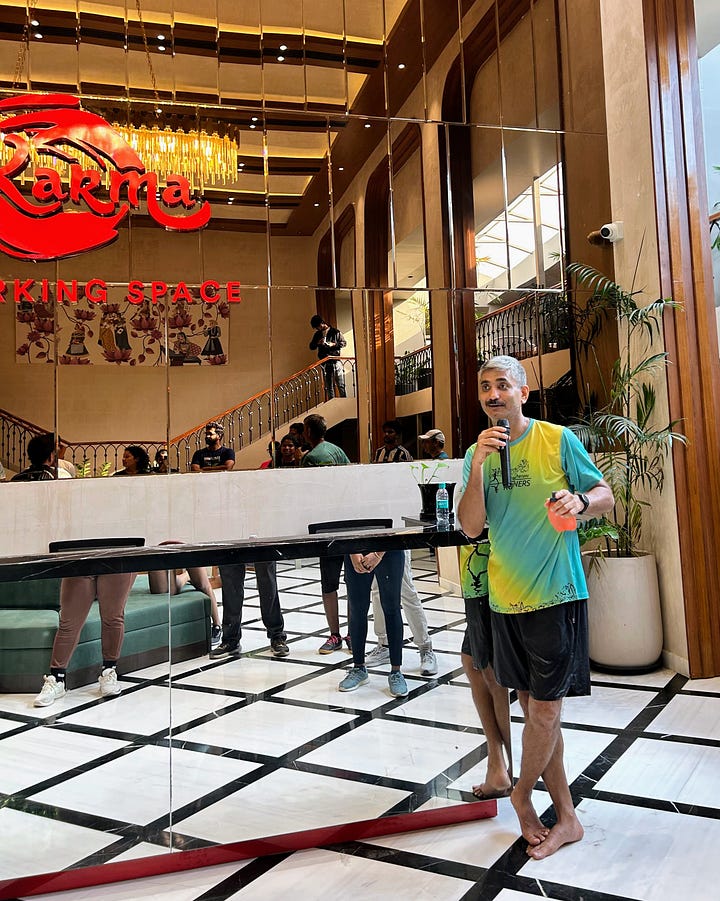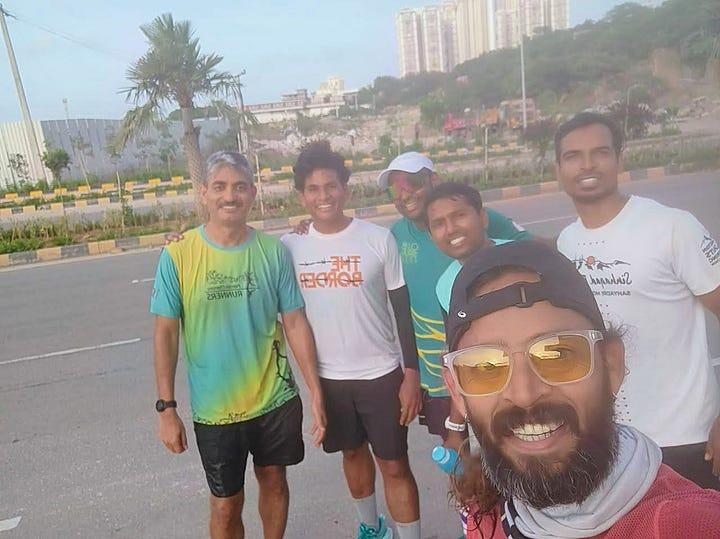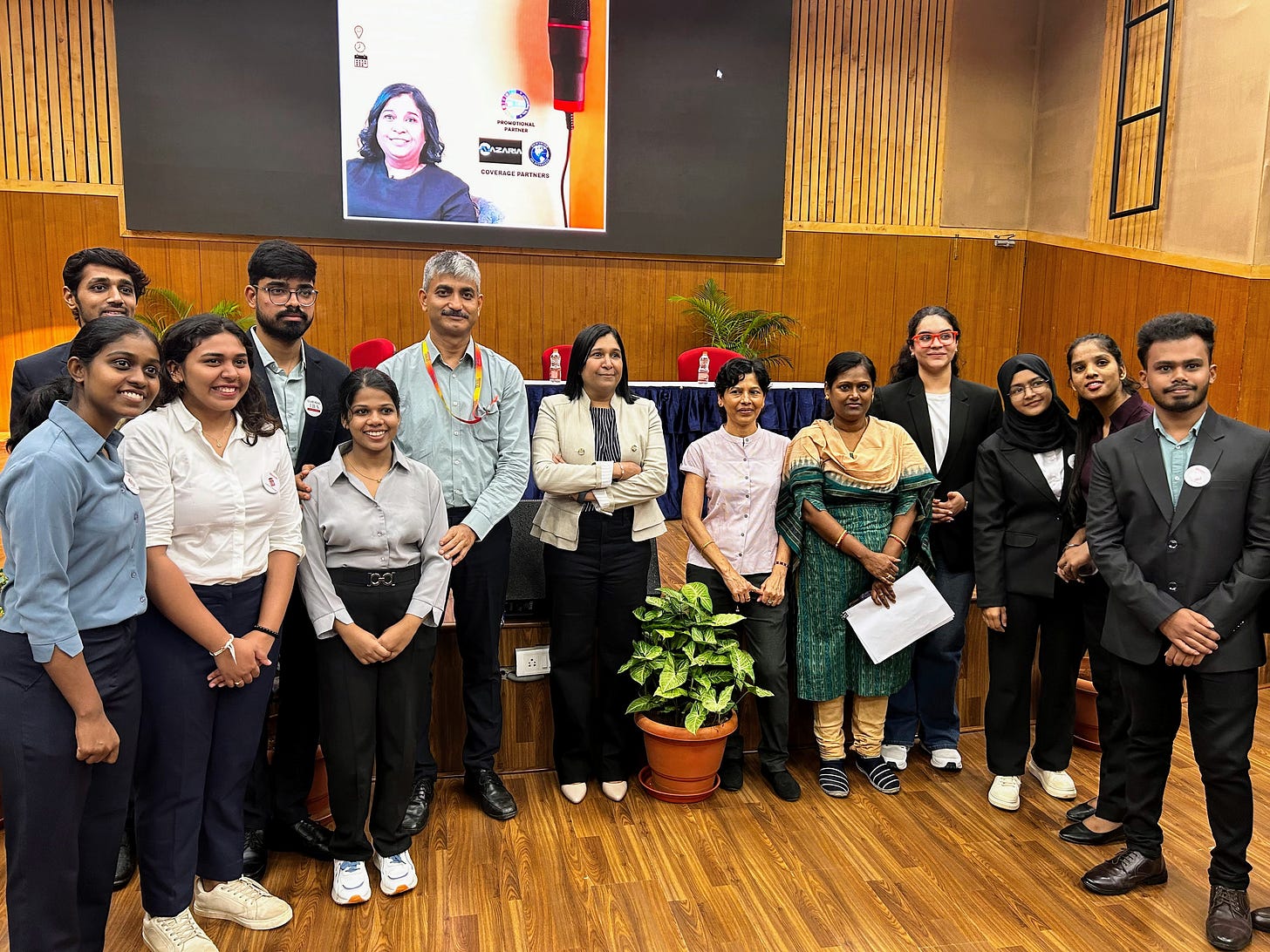From Walled Garden to Digital Commons
Decentralized and Interoperable
Some mornings begin inside a calm cocoon—your own rhythm, your own path, your own quiet corner of the world. And then suddenly, you turn a corner and find yourself in a crowd, moving with others, adjusting your stride to match a shared tempo. In that moment, you’re no longer navigating solo. You’re part of something—loosely formed, lightly governed, but unmistakably collective.
That shift—from the solitary to the social, from the self-contained to the shared—captures something essential about the age we live in. Increasingly, we’re seeing the world tilt toward new forms of organisation that prioritise connectedness without centralisation, collaboration without control. Whether it’s how we build digital platforms, organise communities, or even train for the long haul, the focus is subtly but surely shifting. Walled gardens are being questioned, and open networks are quietly, stubbornly asserting their place. The desire to own and protect is giving way—sometimes reluctantly, sometimes enthusiastically—to the need to co-create and interoperate.
In product journeys—as in life—Anu Bulusu reminded us that clarity of purpose matters more than perfection. Her founder story, rooted in empathy and resilience, offers a blueprint for navigating uncertainty, decoding invisible barriers, and building products—and careers—that don’t just scale, but stay true to the people behind them.
Her forthcoming book, Sticking On: Stay, Rise, Win, is a no-fluff guide for ambitious professionals—especially women—seeking authentic growth without burnout or compromise.
But it’s not easy. Building authentic growth—on the web or in life—takes effort. It demands a tolerance for ambiguity, a commitment to principles, and above all, a steady cadence even when the path rises. Sometimes the bridge to that common ground is a protocol. Sometimes it’s a conversation over light stretching after a long run. Sometimes it’s the willingness to invite others in—even if it means letting go of how tightly you once held the reins.
This week’s edition reflects on that movement—from enclosure to emergence, from solo effort to federated rhythm. We may begin alone, but the real momentum builds when we find ways to move together—independent yet interlinked.
DTW
During the Week, Meta’s Threads announced two new features that deepen its integration into the fediverse—an open, decentralised social web—it raises eyebrows. The changes allow Threads users (who’ve enabled fediverse sharing) to both (a) view posts from federated users on other platforms in a dedicated feed, and (b) search for federated users across servers. It sounds technical, but the implication is profound: Meta is finally learning to interoperate.
For most of its history, Meta has thrived on enclosure. Facebook, Instagram, and WhatsApp—each grew by keeping users in, discouraging exit, and tightly controlling the data loops that generate advertising dollars. It’s what made Meta a walled garden—and also what kept the company dominant in the attention economy.
To appreciate the shift, we need to understand what the fediverse is. Unlike traditional social platforms that are owned and operated by single companies, the fediverse is a constellation of independently hosted platforms (like Mastodon, Bookwyrm, Pixelfed, and others) that communicate using a common protocol—ActivityPub. Think of it like email: Gmail, Outlook, and ProtonMail are different services, but they all talk to each other. In the fediverse, users can engage across platforms while maintaining local control, moderation, and data sovereignty.
So why is Meta playing nice? Some see it as a PR move—to position Threads as a more open, ethical alternative to Twitter/X, especially after Musk’s erratic handling of free speech, moderation, and monetisation. Others frame it as a regulatory hedge. With increasing scrutiny from the EU and the US on platform gatekeeping and monopolistic behaviour, Meta’s nod to decentralisation may pre-empt antitrust action.
But I see something more strategic and long-term: a platform pivoting from dominance to durability. As attention fragments and user trust declines, platforms are learning that control without credibility is brittle. Threads joining the fediverse isn’t a retreat—it’s an acknowledgment that future influence may come not from owning all the content, but from being the most valuable node in a wider, interoperable network.
Platform businesses—especially those built on user-generated content—depend on three pillars: network effects, data ownership, and user retention. In closed platforms, these feed a virtuous cycle. But in an open architecture like the fediverse, these pillars are redistributed:
Network effects become shared. A popular user on Mastodon can draw engagement from Threads, Pixelfed, or any other server. The boundary of “your user base” becomes blurry.
Data ownership becomes devolved. Threads can’t extract and monetise third-party content as easily, since much of the content is hosted externally. Surveillance capitalism gets complicated.
User retention becomes earned, not enforced. If users can seamlessly move and interact across services, then retention depends on quality of experience—not friction or lock-in.
This is a tectonic shift. It transforms platforms from walled gardens to open ports. And while that seems risky, it may also be the best hedge against irrelevance. As consumers become more privacy-conscious, developers more API-literate, and regulators more assertive, being interoperable isn’t a vulnerability—it’s table stakes.
Meta’s move echoes what we’ve already seen in software. Linux, Git, and Kubernetes didn’t win because they were polished or centralised. They won because they allowed many contributors to build value across boundaries. Similarly, platforms like WordPress and Ghost have shown that decentralised content ecosystems can support rich engagement and monetisation—without locking users in.
In the world of federated social media, this could mean:
User-led innovation: Anyone can build a new fediverse app or feature, and users can adopt it without starting over.
Local moderation with global reach: Communities can set their own rules while still participating in broader conversations.
Resilience against platform failure: If Threads were to shut down tomorrow, federated identities and relationships could persist elsewhere.
It’s not all rosy, of course. Moderation is harder. Onboarding is less intuitive. Spam and misinformation may find new cracks to seep through. But those are design problems, not conceptual flaws. With good UX, smart defaults, and transparent governance, federated systems can scale responsibly.
In that light, Apple’s recent restriction on Progressive Web Apps (PWAs) in the EU and Bluesky’s composable moderation update mark two sharply contrasting responses to the question: how should digital platforms evolve in a world demanding greater decentralisation and interoperability?
Apple’s move amounts to defederation masked as compliance. Rather than embracing the EU’s Digital Markets Act and its push toward open standards, Apple effectively cordons off its ecosystem. By curtailing PWA support—once a bridge between the open web and native iOS—it’s rejecting interoperability in favour of control. This is platform sovereignty asserting itself, where regulatory decentralisation is seen as a threat rather than an opportunity. Apple is protecting its walled garden by pulling up the drawbridge.
Bluesky, meanwhile, is experimenting with precisely the opposite impulse: decentralisation as design opportunity. Its composable moderation system lets users define or adopt custom moderation protocols. Rather than being subject to a central authority’s rules, communities gain tools for self-governance. The risk, of course, is fragmentation. But the payoff is plurality—a more democratic internet where moderation is federated, not imposed.
Apple’s vision is coherent, closed, and commercially defensive. Bluesky’s is messy, open, and civic-minded. One bets on user captivity; the other, on user agency. Both are responses to the decentralised age—but only one seems to trust its users with the responsibility of shaping it.
To conclude, Platform strategy is evolving from territorial control to relationship orchestration. In an interoperable world, what matters is not how many users you own, but how many communities you empower. Meta’s new fediverse features are a small technical update. But strategically, they hint at a profound future: one where platform power comes from connection, not containment. As platform leaders, strategists, or users, we should prepare for that shift—not by doubling down on control, but by designing for modularity, mobility, and mutual respect.
OTW
Over the Weekend, I set out on my regular run route , clocking ten miles that wound through the periphery of Himayatsagar with an incline section at Neopolis/ Movie Towers . By the time I reached CoKarma in Kokapet to join the Founders’ Run, I was already warmed up—in body and in thought.
The Founders’ Run turned out to be more than a group jog. It was a junction. Between ideas and introductions, between the long, often lonely road of building something and the rare joy of finding others running parallel tracks. I added another 5K alongside fellow creators, completing a half marathon in the process—but the real finish line was elsewhere.
During the open-mic, I shared an open invitation to contribute to CeDT at IBS Hyderabad—an evolving platform where founders, researchers, and digital change-makers can co-create scalable, inclusive interventions. It was heartening to find early sparks of interest, including from those whose journeys began at IBS itself.




One such moment of connection was with Raja Shekar Reddy B, BBA alum from the Class of 2017, now co-founder of ADK Consumer Care, the top-selling neem oil brand on Amazon India. His clarity and commitment to building a consumer-first, digital-native brand was inspiring.
A big thank you to Tarun Mor, the spirit behind CoKarma, for cultivating not just co-working spaces, but real community spaces. And a warm shoutout to Sudhanshu Sharma, fellow marathoner and technologist, whose quiet determination—on the road and off—remains a reminder of what consistent effort can yield.
When somebody mentioned inclines, I could not resist offering a small piece of advice I’ve leaned on during uphill stretches: You don’t stop on an incline. You shorten your stride, but keep your cadence. You don’t power through—you pace through. In the long game, that’s what matters.
I walked away that morning energetic and yes fuller. Not just from 21 kilometres, but from the conversations, commitments, and communities that unfolded alongside them.
I love you.
Shailendra


